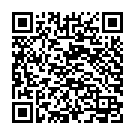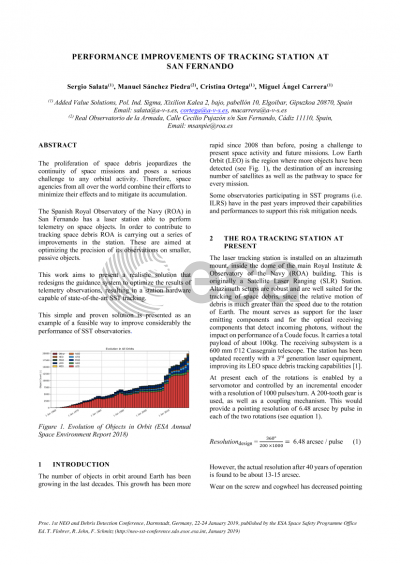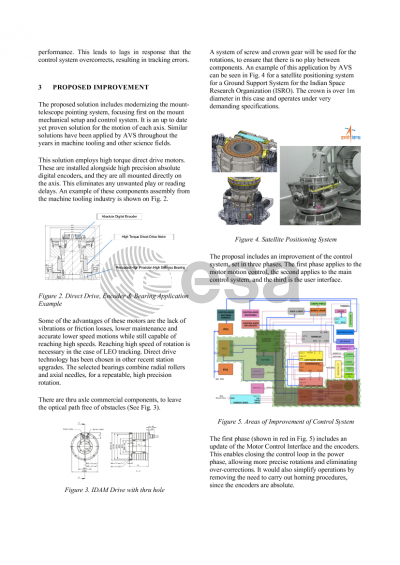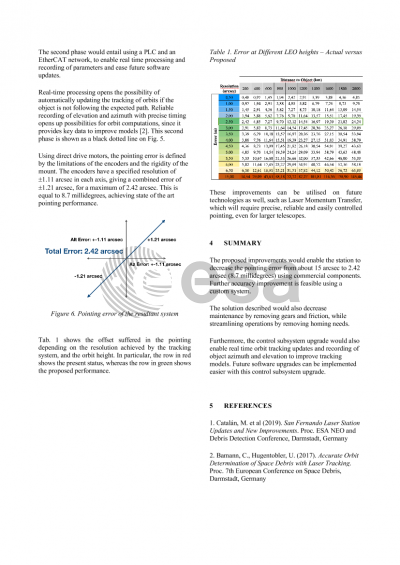Document details

Abstract
The proliferation of space debris jeopardizes the continuity of space missions and poses a serious challenge to any orbital activity. Therefore, space agencies from all over the world combine their efforts to minimize their effects and mitigate their progression.
To support the risk mitigation, the Spanish Royal Institute and Observatory of the Navy (ROA) has a laser station able to perform telemetry on space objects. In order to contribute to tracking space debris, and applying the experience gained in telemetry on active satellites over the years, ROA is carrying out a series of improvements in the station. These are aimed at optimizing its observations on smaller objects without retro-reflectors and with more precision.
The improvements include modernizing the mount-telescope pointing system, focusing first on the mount, mechatronics and control system. A direct drive design is proposed, to improve pointing by an order of magnitude, while enabling precise pinpoint and recording of azimuth and elevation as well as distance to the object. This enhances orbit definition and further tracking.
This work aims to present a realistic proposal that allows to redesign the guidance system and optimize the results of telemetry observations, resulting in a station capable of state-of-the-art tracking.
Preview




